Fundamentals of Environmental Sampling and Analysis by Chunlong Zhang, ISBN-13: 978-0471710974
[PDF eBook eTextbook]
- Publisher: Wiley; 1st edition (March 9, 2007)
- Language: English
- 456 pages
- ISBN-10: 0471710970
- ISBN-13: 978-0471710974
An integrated approach to understanding the principles of sampling, chemical analysis, and instrumentation.
This unique reference focuses on the overall framework and why various methodologies are used in environmental sampling and analysis. An understanding of the underlying theories and principles empowers environmental professionals to select and adapt the proper sampling and analytical protocols for specific contaminants as well as for specific project applications. Covering both field sampling and laboratory analysis, Fundamentals of Environmental Sampling and Analysis includes:
- A review of the basic analytical and organic chemistry, statistics, hydrogeology, and environmental regulations relevant to sampling and analysis
- An overview of the fundamentals of environmental sampling design, sampling techniques, and quality assurance/quality control (QA/QC) essential to acquire quality environmental data
- A detailed discussion of: the theories of absorption spectroscopy for qualitative and quantitative environmental analysis; metal analysis using various atomic absorption and emission spectrometric methods; and the instrumental principles of common chromatographic and electrochemical methods
- An introduction to advanced analytical techniques, including various hyphenated mass spectrometries and nuclear magnetic resonance spectroscopy
With real-life case studies that illustrate the principles plus problems and questions at the end of each chapter to solidify understanding, this is a practical, hands-on reference for practitioners and a great textbook for upper-level undergraduates and graduate students in environmental science and engineering.
Table of Contents:
Preface. 1. Introduction to Environmental Data Acquisition.
1.1 Introduction.
1.1.1 Importance of Scientifically Reliable and Legally Defensible Data.
1.1.2 Sampling Error vs. Analytical Error During Data Acquisition.
1.2 Environmental Sampling.
1.2.1 Scope of Environmental Sampling.
1.2.2 Where, When, What, How, and How Many.
1.3 Environmental Analysis.
1.3.1 Uniqueness of Modern Environmental Analysis.
1.3.2 Classical and Modern Analytical and Monitoring Techniques.
References.
Questions and Problems.
2. Basics of Environmental Sampling and Analysis.
2.1 Essential Analytical and Organic Chemistry.
2.1.1 Concentration Units.
2.1.2 Common Organic Pollutants and Their Properties.
2.1.3 Analytical Precision, Accuracy, and Recovery.
2.1.4 Detection Limit and Quantitation Limit.
2.1.5 Standard Calibration Curve.
2.2 Essential Environmental Statistics.
2.2.1 Measurements of Central Tendency and Dispersion.
2.2.2 Understanding Probability Distributions.
2.2.3 Type I and II Errors: False Positive and False Negative.
2.2.4 Detection of Outliers.
2.2.5 Analysis of Censored Data.
2.2.6 Analysis of Spatial and Time Series Data.
2.3 Essential Hydrology and Geology.
2.3.1 Stream Water Flow and Measurement.
2.3.2 Groundwater Flow in Aquifers.
2.3.3 Groundwater Wells.
2.4 Essential Knowledge of Environmental Regulations.
2.4.1 Major Regulations Administrated by the U.S. EPA.
2.4.2 Other Important Environmental Regulations.
References.
Questions and Problems.
3. Environmental Sampling Design.
3.1 Planning and Sampling Protocols.
3.1.1 Data Quality Objectives.
3.1.2 Basic Considerations of Sampling Plan.
3.2 Sampling Environmental Population.
3.2.1 Where (Space) and When (Time) to Sample.
3.2.2 Obtain Representative Samples from Various Matrices.
3.3 Environmental Sampling Approaches: Where and When.
3.3.1 Judgmental Sampling.
3.3.2 Simple Random Sampling.
3.3.3 Stratified Random Sampling.
3.3.4 Systematic Sampling.
3.3.5 Other Sampling Designs.
3.4 Estimating Sample Numbers: How Many Samples are Required.
References.
Questions and Problems.
4. Environmental Sampling Techniques.
4.1 General Guidelines of Environmental Sampling Techniques.
4.1.1 Sequence of Sampling Matrices and Analytes.
4.1.2 Sample Amount.
4.1.3 Sample Preservation and Storage.
4.1.4 Selection of Sample Containers.
4.1.5 Selection of Sampling Equipment.
4.2 Techniques for Sampling Various Media: Practical Approaches and Tips.
4.2.1 Surface Water and Wastewater Sampling.
4.2.2 Groundwater Sampling.
4.2.3 Soil and Sediment Sampling.
4.2.4 Hazardous Waste Sampling.
4.2.5 Biological Sampling.
4.2.6 Air and Stack Emission Sampling.
References.
Questions and Problems.
5. Methodology and Quality Assurance/Quality Control of Environmental Analysis.
5.1 Overview on Standard Methodologies.
5.1.1 The U.S. EPA Methods for Air, Water and Wastewater, and Hazardous Waste.
5.1.2 Other Applicable Methods: APHA/ASTM/OSHA/NIOSH/USGS/AOAC.
5.2 Selection of Standard Methods.
5.2.1 Methods for Sample Preparation.
5.2.2 Methods for Physical, Biological, and General Chemical Parameters.
5.2.3 Methods for Volatile Organic Compounds (VOCs).
5.2.4 Methods for Semivolatile Organic Compounds (SVOCs).
5.2.5 Methods for Other Pollutants and Compounds of Emerging Environmental Concerns.
5.3 Field Quality Assurance/Quality Control (QA/QC).
5.3.1 Types of Field QA/QC Samples.
5.3.2 Numbers of Field QA/QC Samples.
5.4 Analytical Quality Assurance/Quality Control.
5.4.1 Quality Control Procedures for Sample Preparation.
5.4.2 Quality Control Procedures During Analysis.
References.
Questions and Problems.
6. Common Operations and Wet Chemical Methods in Environmental Laboratories.
6.1 Basic Operations in Environmental Laboratories.
6.1.1 Labware Cleaning Protocols for Trace Analysis.
6.1.2 Chemical Reagent Purity, Standard, and Reference Materials.
6.1.3 Volumetric Glassware and Calibration.
6.1.4 Laboratory Health, Safety, and Emergency First Aid.
6.1.5 Waste Handling and Disposal.
6.2 Wet Chemical Methods and Common Techniques in Environmental Analysis.
6.2.1 Gravimetric and Volumetric Wet Chemical Methods.
6.2.2 Common Laboratory Techniques.
6.3 Analytical Principles for Common Wet Chemical Methods.
6.3.1 Moisture in Solid and Biological Samples.
6.3.2 Solids in Water, Wastewater, and Sludge (TS, TSS, TDS, VS).
6.3.3 Acidity, Alkalinity, and Hardness of Waters.
6.3.4 Oxygen Demand in Water and Wastewater (DO, BOD and COD).
6.3.5 Oil and Grease in Water and Wastewater.
6.3.6 Residual Chlorine and Chloride in Drinking Water.
6.3.7 Ammonia in Wastewater.
6.3.8 Cyanide in Water, Wastewater and Soil Extract.
6.3.9 Sulfide in Water and Waste.
References.
Questions and Problems.
7. Fundamentals of Sample Preparation for Environmental Analysis.
7.1 Overview on Sample Preparation.
7.1.1 Purpose of Sample Preparation.
7.1.2 Types of Sample Preparation.
7.2 Sample Preparation for Metal Analysis.
7.2.1 Various Forms of Metals and Preparation Methods.
7.2.2 Principles of Acid Digestion and Selection of Acid.
7.2.3 Alkaline Digestion and Other Extraction Methods.
7.3 Extraction for SVOC and Non-VOC from Liquid or Solid Samples.
7.3.1 Separatory Funnel and Continuous Liquid–Liquid Extraction (LLE).
7.3.2 Solid Phase Extraction.
7.3.3 Solid Phase Microextraction.
7.3.4 Soxhlet and Automatic Soxhlet Extraction (Soxtec).
7.3.5 Ultrasonic Extraction.
7.3.6 Pressured Fluid Extraction.
7.3.7 Supercritical Fluid Extraction.
7.3.8 Comparison and Selection of Organic Extraction Methods.
7.4 Post-Extraction Clean-up of Organic Compounds.
7.4.1 Theories and Operation Principles of Various Clean-up Methods.
7.4.2 Recommended Clean-up Method for Selected Compounds.
7.5 Derivatization of Non-VOC for Gas Phase Analysis.
7.6 Sample Preparation for VOC, Air and Stack Gas Emission.
7.6.1 Dynamic Headspace Extraction (Purge-and-Trap).
7.6.2 Static Headspace Extraction.
7.6.3 Azeotropic and Vacuum Distillation.
7.6.4 Volatile Organic Sampling Train.
References.
Questions and Problems.
8. UV-Visible and Infrared Spectroscopic Methods in Environmental Analysis.
8.1 Introduction to the Principles of Spectroscopy.
8.1.1 Understanding the Interactions of Various Radiations with Matter.
8.1.2 Origins of Absorption in Relation to Molecular Orbital Theories.
8.1.3 Molecular Structure and UV-Visible/Infrared Spectra.
8.1.4 Quantitative Analysis with Beer-Lambert’s Law.
8.2 UV-Visible Spectroscopy.
8.2.1 UV-Visible Instrumentation.
8.2.2 UV-VIS as a Workhorse in Environmental Analysis.
8.3 Infrared Spectroscopy.
8.3.1 Fourier Transform Infrared Spectrometers (FTIR).
8.3.2 Dispersive Infrared Instruments (DIR).
8.3.3 Nondispersive Infrared Instruments (NDIR).
8.3.4 Applications in Industrial Hygiene and Air Pollution Monitoring.
8.4 Practical Aspects of UV-Visible and Infrared Spectrometry.
8.4.1 Common Tips for UV-Visible Spectroscopic Analysis.
8.4.2 Sample Preparation for Infrared Spectroscopic Analysis.
References.
Questions and Problems.
9. Atomic Spectroscopy for Metal Analysis.
9.1 Introduction to the Principles of Atomic Spectroscopy.
9.1.1 Flame and Flameless Atomic Absorption.
9.1.2 Inductively Coupled Plasma Atomic Emission.
9.1.3 Atomic X-ray Fluorescence.
9.2 Instruments for Atomic Spectroscopy.
9.2.1 Flame and Flameless Atomic Absorption.
9.2.2 Cold Vapor and Hydride Generation Atomic Absorption.
9.2.3 Inductively Coupled Plasma Atomic Emission.
9.2.4 Atomic X-ray Fluorescence.
9.3 Selection of the Proper Atomic Spectroscopic Techniques.
9.3.1 Comparison of Detection Limits and Working Range.
9.3.2 Comparison of Interferences and Other Considerations.
9.4 Practical Tips to Sampling, Sample Preparation, and Metal Analysis.
References.
Questions and Problems.
10. Chromatographic Methods for Environmental Analysis.
10.1 Introduction to Chromatography.
10.1.1 Types of Chromatography and Separation Columns.
10.1.2 Common Stationary Phases: The Key to Separation.
10.1.3 Other Parameters Important to Compound Separation.
10.1.4 Terms and Theories of Chromatogram.
10.1.5 Use of Chromatograms for Qualitative and Quantitative Analysis.
10.2 Instruments of Chromatographic Methods.
10.2.1 Gas Chromatography.
10.2.2 High Performance Liquid Chromatography (HPLC).
10.2.3 Ion Chromatography.
10.2.4 Supercritical Fluid Chromatography.
10.3 Common Detectors for Chromatography.
10.3.1 Detectors for Gas Chromatography.
10.3.2 Detectors for High Performance Liquid Chromatography.
10.3.3 Detectors for Ion Chromatography.
10.4 Applications of Chromatographic Methods in Environmental Analysis.
10.4.1 Gases, Volatile, and Semivolatile Organics with GC.
10.4.2 Semivolatile and Nonvolatile Organics with HPLC.
10.4.3 Ionic Species with IC.
10.5 Practical Tips to Chromatographic Methods.
10.5.1 What Can and Cannot be Done with GC and HPLC.
10.5.2 Development for GC and HPLC Methods.
10.5.3 Overview on Maintenance and Troubleshooting.
References.
Questions and Problems.
11. Electrochemical Methods for Environmental Analysis.
11.1 Introduction to Electrochemical Theories.
11.1.1 Review of Redox Chemistry and Electrochemical Cells.
11.1.2 General Principles of Electroanalytical Methods.
11.1.3 Types of Electrodes and Notations for Electrochemical Cells.
11.2 Potentiometric Applications in Environmental Analysis.
11.2.1 Measurement of pH.
11.2.2 Measurement of Ions by Ion Selective Electrodes (ISEs).
11.2.3 Potentiometric Titration (Indirect Potentiometry).
11.3 Voltammetric Applications in Environmental Analysis.
11.3.1 Measurement of Dissolved Oxygen.
11.3.2 Measurement of Anions by Amperometric Titration.
11.3.3 Measurement of Metals by Anodic Stripping Voltammetry (ASV).
References.
Questions and Problems.
12. Other Instrumental Methods in Environmental Analysis.
12.1 Hyphenated Mass Spectrometric Methods and Applications.
12.1.1 Atomic Mass Spectrometry (ICP-MS).
12.1.2 Molecular Mass Spectrometry (GC-MS and LC-MS).
12.1.3 Mass Spectrometric Applications in Environmental Analysis.
12.2 Nuclear Magnetic Resonance Spectroscopy (NMR).
12.2.1 NMR Spectrometers and the Origin of NMR Signals.
12.2.2 Molecular Structures and NMR Spectra.
12.2.3 Applications of NMR in Environmental Analysis.
12.3 Miscellaneous Methods.
12.3.1 Radiochemical Analysis.
12.3.2 Surface and Interface Analysis.
12.3.3 Screening Methods Using Immunoassay.
References.
Questions and Problems.
Experiments.
Experiment 1. Data Analysis and Statistical Treatment: A Case Study on Ozone Concentrations in Cities of Houston-Galveston Area.
Experiment 2. Collection and Preservation of Surface Water and Sediment Samples and Field Measurement of Several Water Quality Parameters.
Experiment 3. Gravimetric Analysis of Solids and Titrimetric Measurement of Alkalinity of Streams and Lakes.
Experiment 4. Determination of Dissolved Oxygen (DO) by Titrimetric Winkler Method.
Experiment 5. Determination of Chemical Oxygen Demand (COD) in Water and Wastewater.
Experiment 6. Determination of Nitrate and Nitrite in Water by UV-Visible Spectrometry.
Experiment 7. Determination of Anionic Surfactant (Detergent) by Liquid-Liquid Extraction Followed by Colorimetric Methods.
Experiment 8. Determination of Hexavalent and Trivalent Chromium (Cr6+ and Cr3+) in Water by Visible Spectrometry.
Experiment 9. Determination of Greenhouse Gases by Fourier Transform Infrared Spectrometer.
Experiment 10. Determination of Metals in Soil–Acid Digestion and Inductively Coupled Plasma–Optical Emission Spectroscopy (ICP-OES).
Experiment 11. Determination of Explosives Compounds in a Contaminated Soil by High Performance Liquid Chromatography (HPLC).
Experiment 12. Measurement of Headspace Chloroethylene by Gas Chromatography with Flame Ionization Detector (GC-FID).
Experiment 13. Determination of Chloroethylene by Gas Chromatography with Electron Capture Detector (GC-ECD).
Experiment 14. Use of Ion Selective Electrode to Determine Trace Level of Fluoride in Drinking and Natural Water.
Experiment 15. Identification of BTEX and Chlorobenzene Compounds by Gas Chromatography-Mass Spectrometry (GC–MS).
Appendices.
A. Common Abbreviations and Acronyms.
B. Structures and Properties of Important Organic Pollutants.
C1. Standard Normal Cumulative Probabilities.
C2. Percentiles of t-Distribution.
C3. Critical Values for the F-Distribution.
D. Required Containers, Preservation Techniques, and Holding Times.
Index.
Chunlong (Carl) Zhang, PhD, is an Associate Professor of Environmental Science and Environmental Chemistry at the University of Houston-Clear Lake. He has over two decades of experience in academia, industry, and consulting. Dr. Zhang has firsthand, practical knowledge of environmental sampling and analysis from work in the field and in the lab. He is the author or coauthor of numerous articles and reports on contaminant fate/transport, environmental remediation, and environmental assessment.
What makes us different?
• Instant Download
• Always Competitive Pricing
• 100% Privacy
• FREE Sample Available
• 24-7 LIVE Customer Support

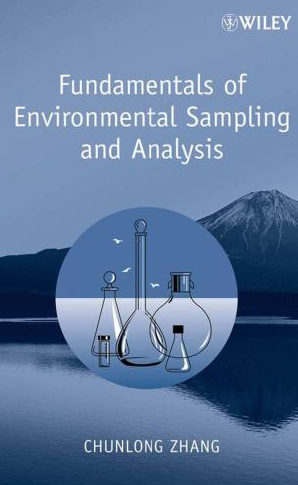
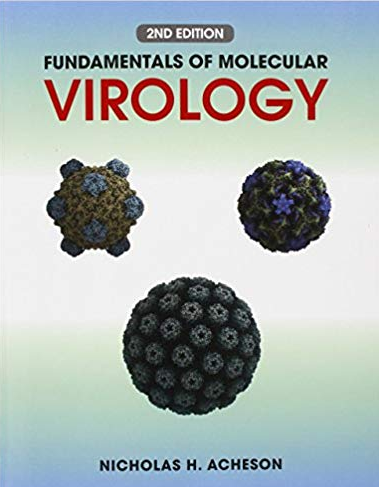
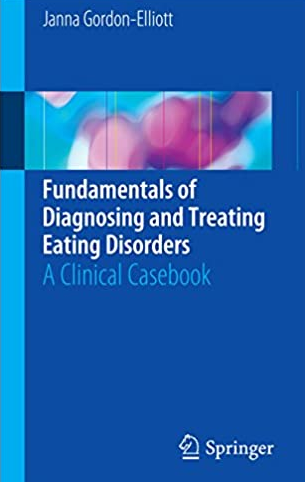


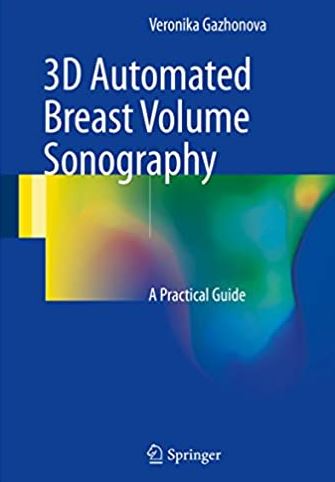
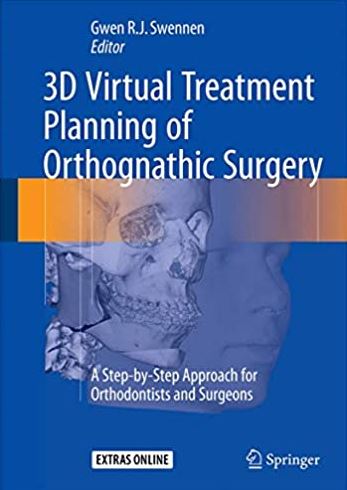


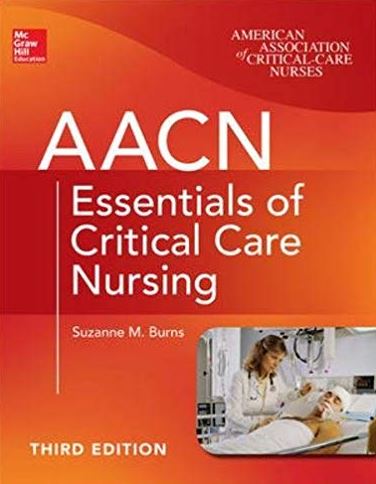

Isabella Hayes (verified owner) –
Excellent service, highly satisfied.
Jack Hughes (verified owner) –
Impressed by the quick delivery and smooth process.
Lily Fisher (verified owner) –
Fast service and excellent customer support.